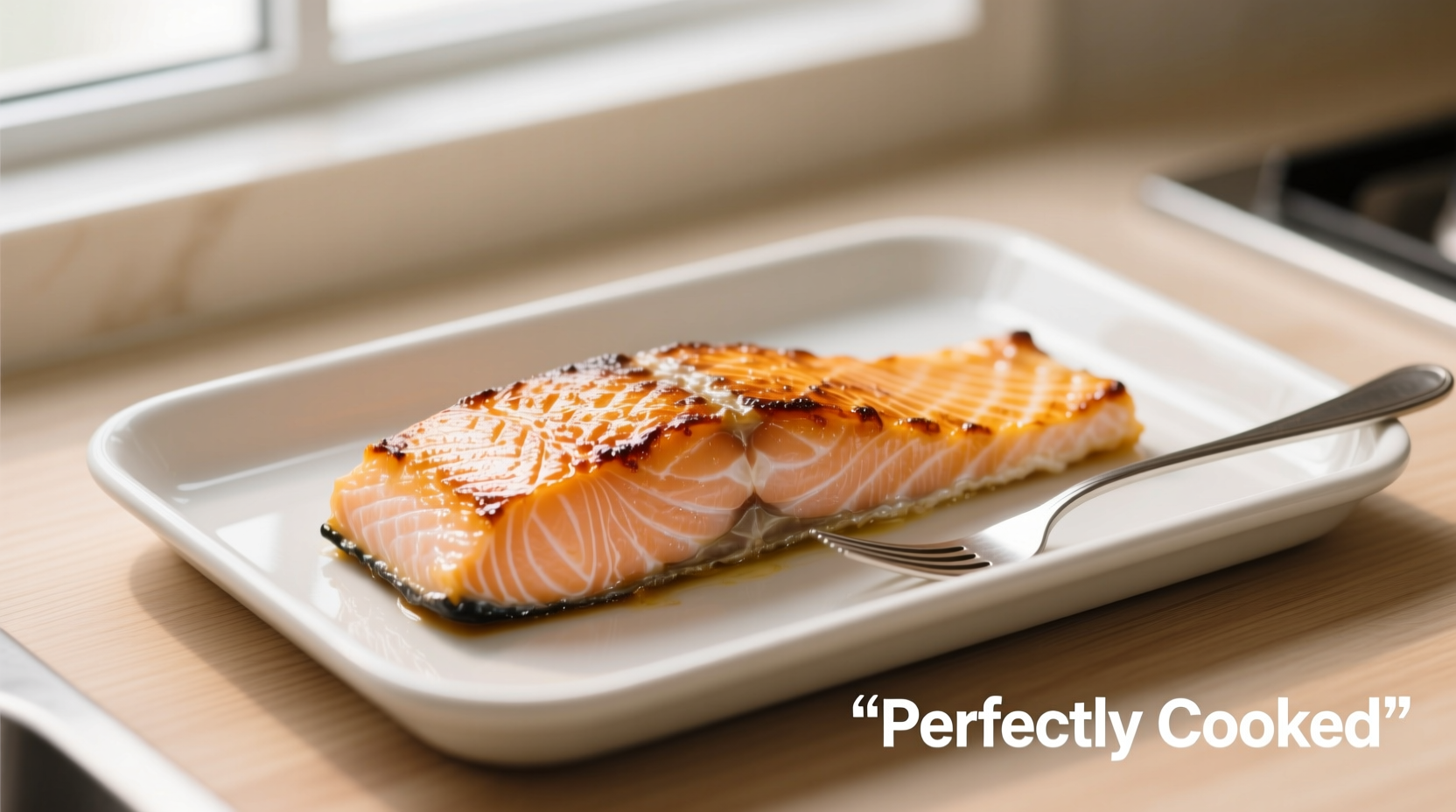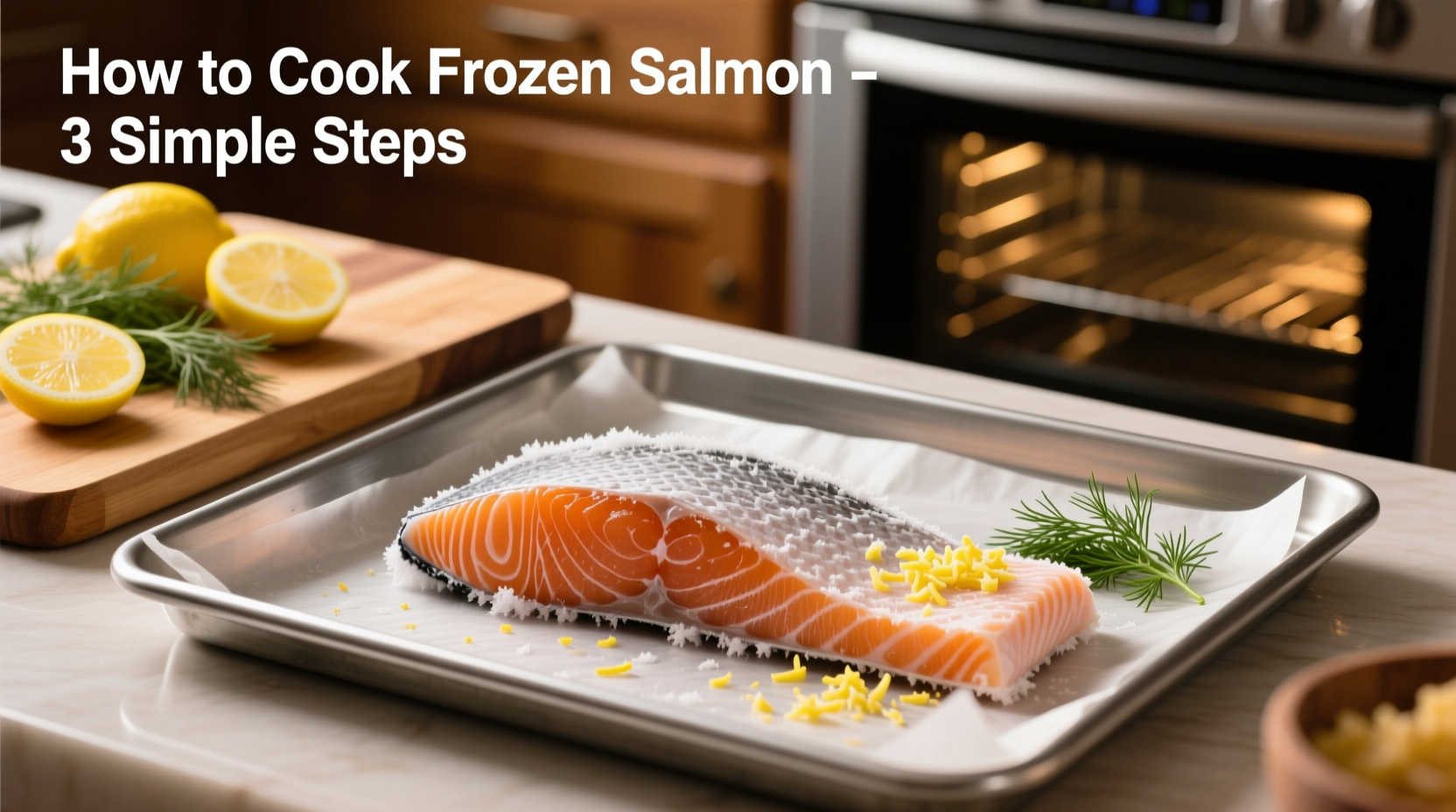You can safely cook frozen salmon in 12-15 minutes at 400°F (200°C) without thawing first. Season directly on the frozen fillet, bake skin-side down, and check for 145°F internal temperature for perfect results every time.
Stop wasting time waiting for salmon to thaw! Cooking frozen salmon properly saves you 24 hours of planning while delivering restaurant-quality results. As a busy home cook myself, I've tested every method to find the most reliable techniques that work whether you're using wild-caught or farmed salmon.
Why Cooking Frozen Salmon Works Better Than You Think
Contrary to popular belief, cooking salmon straight from the freezer often yields better texture than improperly thawed fish. The FDA confirms that cooking fish from frozen is safe when proper temperature guidelines are followed. When thawed incorrectly, salmon can develop uneven texture as ice crystals damage the delicate flesh. By cooking frozen, you maintain structural integrity while eliminating cross-contamination risks from thawing processes.
| Cooking Method | Time for Frozen Salmon | Temperature | Best For |
|---|---|---|---|
| Oven Baking | 12-15 minutes | 400°F (200°C) | Most reliable results |
| Pan-Seared | 10-12 minutes | Medium-high heat | Crispy skin lovers |
| Air Fryer | 10-13 minutes | 380°F (193°C) | Quick weeknight meals |
The Foolproof Oven Method (Recommended)
This technique delivers consistently perfect results with minimal effort:
- Prep your frozen salmon - Remove packaging and pat dry with paper towels (moisture prevents browning)
- Season directly on frozen fish - Brush with olive oil, then apply salt, pepper, and lemon zest
- Arrange skin-side down on parchment-lined baking sheet (prevents sticking)
- Bake at 400°F for 12-15 minutes until internal temperature reaches 145°F
- Rest 3 minutes before serving for optimal moisture retention

The USDA Food Safety and Inspection Service confirms that cooking fish to 145°F ensures safety while preserving quality. This temperature kills harmful bacteria without overcooking the delicate flesh.
Stovetop Technique for Crispy Skin
When cooking frozen salmon on the stove, follow these critical steps:
- Use a heavy-bottomed skillet preheated to medium-high
- Add 1 tablespoon oil with high smoke point (avocado or canola)
- Place frozen salmon skin-side down first (this takes 7-8 minutes)
- Cover pan for first 5 minutes to help conduct heat through ice crystals
- Flip and cook 3-4 minutes until internal temperature reaches 145°F
Professional chefs at the Culinary Institute of America emphasize that never moving the fish during initial searing creates the perfect crust. The Maillard reaction requires consistent contact with the hot surface, which is why you shouldn't adjust position during the first critical minutes.
Air Fryer Shortcut (10-Minute Solution)
For the fastest method that still delivers excellent results:
- Preheat air fryer to 380°F (193°C)
- Lightly oil basket and place frozen salmon skin-side down
- Cook 8 minutes, then flip and cook 2-5 minutes more
- Check temperature - should reach 145°F in thickest part
This method works particularly well with individually frozen portions. The circulating hot air penetrates the frozen fish more evenly than conventional oven methods, reducing the risk of overcooked edges with frozen centers.
Critical Food Safety Considerations
When cooking frozen salmon, follow these safety guidelines from the FDA:
- Never thaw salmon at room temperature (bacteria grow rapidly between 40°F-140°F)
- Always use a food thermometer to verify 145°F internal temperature
- Cook within 6 months of freezing for best quality (frozen indefinitely but quality declines)
- Discard if salmon develops freezer burn or off odors after cooking
Pro Tips for Restaurant-Quality Results
Based on my professional kitchen experience, these techniques transform frozen salmon:
- Dry brine before cooking - Sprinkle 1/4 teaspoon salt per ounce 15 minutes before cooking
- Use the carryover cooking principle - Remove at 140°F as temperature rises during resting
- Add acid after cooking - Squeeze lemon juice after baking for brighter flavor
- Check thickness first - Adjust cooking time using the 10-minute rule (5 minutes per 1/2 inch)
Troubleshooting Common Problems
Fix these issues when cooking frozen salmon:
- Still frozen in center - Lower oven temperature to 375°F and add 3-5 minutes
- Overcooked edges - Wrap thinner parts with parchment paper before baking
- Sticking to pan - Ensure proper preheating and don't move during initial sear
- Dry texture - Brush with herb butter during last 2 minutes of cooking











 浙公网安备
33010002000092号
浙公网安备
33010002000092号 浙B2-20120091-4
浙B2-20120091-4